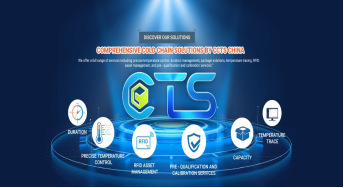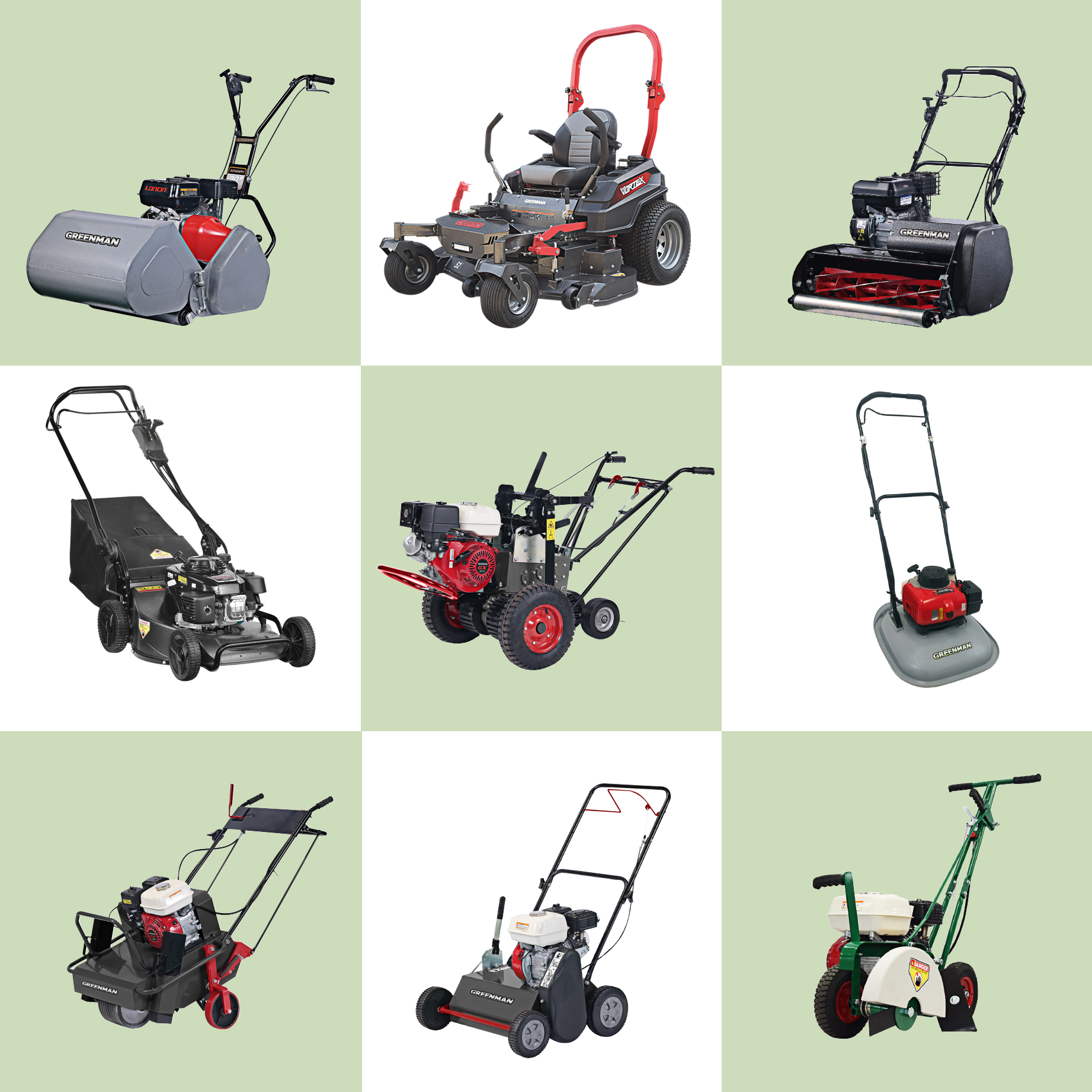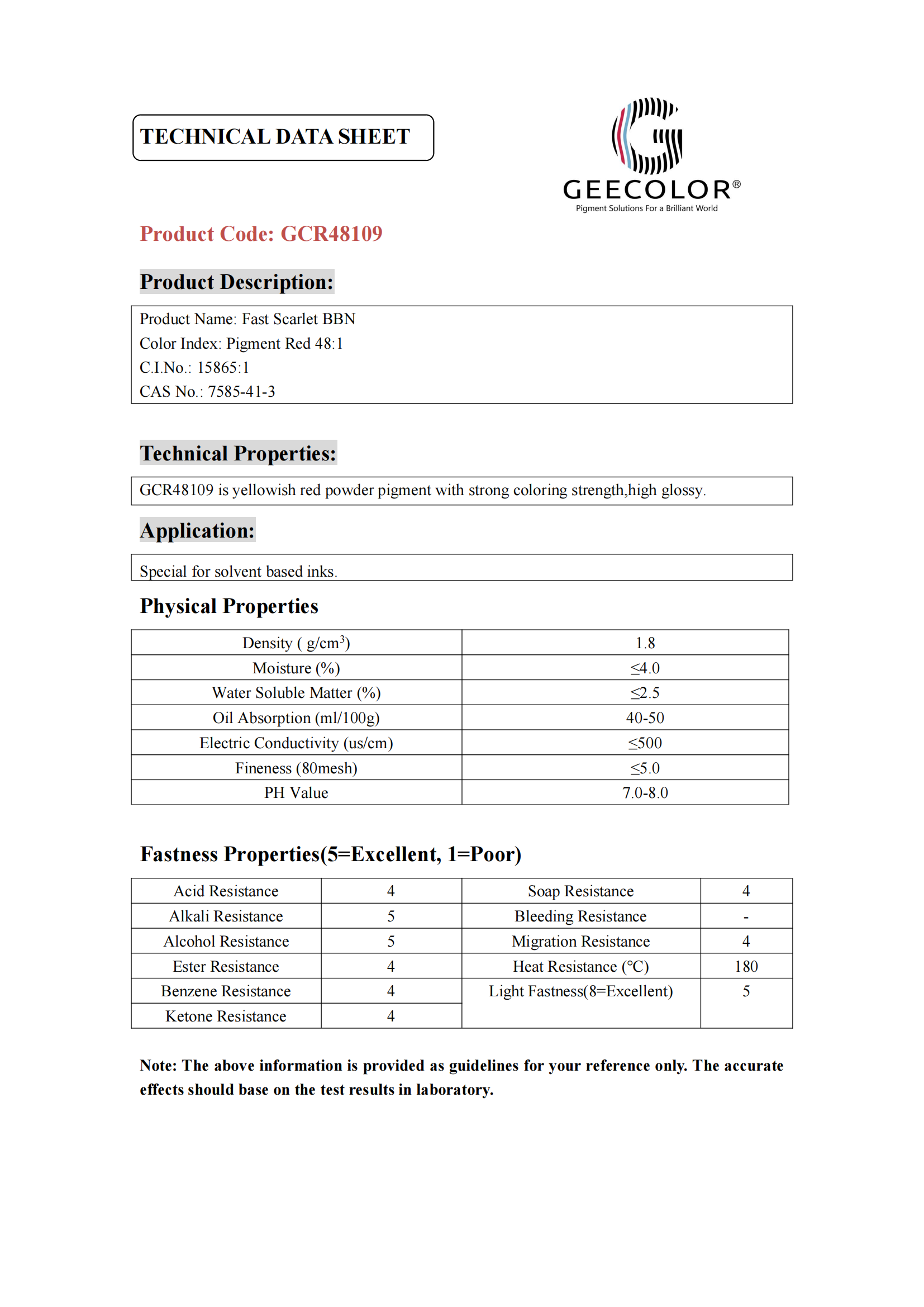Archives
- By thread 5414
-
By date
- June 2021 10
- July 2021 6
- August 2021 20
- September 2021 21
- October 2021 48
- November 2021 40
- December 2021 23
- January 2022 46
- February 2022 80
- March 2022 109
- April 2022 100
- May 2022 97
- June 2022 105
- July 2022 82
- August 2022 95
- September 2022 103
- October 2022 117
- November 2022 115
- December 2022 102
- January 2023 88
- February 2023 90
- March 2023 116
- April 2023 97
- May 2023 159
- June 2023 145
- July 2023 120
- August 2023 90
- September 2023 102
- October 2023 106
- November 2023 100
- December 2023 74
- January 2024 75
- February 2024 75
- March 2024 78
- April 2024 74
- May 2024 108
- June 2024 98
- July 2024 116
- August 2024 134
- September 2024 130
- October 2024 141
- November 2024 171
- December 2024 115
- January 2025 216
- February 2025 140
- March 2025 220
- April 2025 233
- May 2025 239
- June 2025 303
- July 2025 228
-
HE Akibet Bildirimi Kurum:96745
Sayin ilgili,
Ş kurumuna ait Toplu Havale EFT akibet bilgileri ektedir.
Bilgilerinizi rica ederiz.
T. Garanti Bankasi A.Ş.T. Garanti Bankası A.Ş.
Genel Müdürlük: Nispetiye Mah. Aytar Cad. No:2, Beşiktaş, Levent, 34340, İstanbul
Büyük Mükellefler Vergi Dairesi Başkanlığı Vergi No: 8790017566
Mersis Numarası: 0879 0017 5660 0379
www.garantibbva.com.tr
by "Garanti BBVA Musteri Bilgilendirme" <garantibbva@ccbdirect.com> - 09:55 - 16 Jul 2025 -
HE Akibet Bildirimi Kurum:96745
Sayin ilgili,
Ş kurumuna ait Toplu Havale EFT akibet bilgileri ektedir.
Bilgilerinizi rica ederiz.
T. Garanti Bankasi A.Ş.T. Garanti Bankası A.Ş.
Genel Müdürlük: Nispetiye Mah. Aytar Cad. No:2, Beşiktaş, Levent, 34340, İstanbul
Büyük Mükellefler Vergi Dairesi Başkanlığı Vergi No: 8790017566
Mersis Numarası: 0879 0017 5660 0379
www.garantibbva.com.tr
by "Garanti BBVA Musteri Bilgilendirme" <garantibbva@ccbdirect.com> - 08:48 - 16 Jul 2025 -
Greetings from Beijing TransFar Electronics Group Co.,Ltd
Hello,
Good day. This is Vicky from Beijing TransFar electronics.
We have in this area for more than 30 years experience and we dedicated to the research, design, production, sales, and service of products such
as current/voltage sensors, small precision electromagnetic
components, reactors/special transformers, power supplies, and
AC/DC charging stations for electric vehicles. You can refer to our website for details.
Then you can tell me which product you are interested in. Then i will give you the specific quotation based on quantity.
I am looking forward to your reply.

Vicky Shi
International Business Manager
Beijing TransFar Electric Group Co., Ltd
C3,Building No.201,IT Industrial Park, No.10A,Jiuxianqiao North Road,
Chaoyang District,Beijing 100015, P.R. China
M:+86-13315672143(WhatsApp)
T :+86-10-57589132
by "Charanjit Budnickb" <budnickcharanjit@gmail.com> - 07:33 - 16 Jul 2025 -
Collaborative action on sustainability has been largely led by governments. In this new era, businesses could play a leading role.
Re:think
Market-based sustainability solutions
by "McKinsey Quarterly" <publishing@email.mckinsey.com> - 03:30 - 16 Jul 2025 -
Re: Yes?
Hello,I found critical issue on your website, I would suggesting a few opportunities for improving its performance, visibility, and ranking.Can I send you a errors to highlight these issue?Please reply "Yes" or "Sure"Thanks,
by "Eric Carter" <Ericcarter.it123@outlook.com> - 02:06 - 16 Jul 2025 -
Transform Your Cold Chain Strategy for Biopharmaceutical Success
Dear Info,
My name is Sabrina Xiao from Guangzhou Cesin Cold Chain Technology Co.,Ltd(CCTS CHINA). We are dedicated to providing top-notch cold chain packaging solutions, especially tailored for the biopharmaceutical industry.
In the biopharmaceutical field, the integrity of temperature-sensitive products such as vaccines, biological reagents, and pharmaceuticals is non-negotiable. Our packaging systems are engineered to meet the strictest regulatory standards and ensure the potency and safety of your valuable products throughout the supply chain.
Our cold chain packaging incorporates advanced temperature monitoring devices, allowing for real-time tracking and data logging. This gives you complete visibility and control over the temperature conditions of your shipments. The packaging materials are carefully selected to provide optimal protection against external factors and maintain the required temperature range.By choosing CCTS CHINA, you can expect:
Compliance with international and domestic regulations.
Minimized risk of product degradation due to temperature excursions.
Streamlined logistics operations with our reliable packaging solutions.

I would like to offer you a detailed consultation to showcase how our solutions can address your specific cold chain needs. Please contact me at your convenience.
Thank you for your attention.
Best regards,
Sabrina XiaoSales Manager
Tel:86-18816890302 same as Whatsapp
Guangzhou Cesin Cold Chain Technology Co.,Ltd
Guangzhou Cesin Electronic Technology Co.,Ltd
by "Higbie Brunell" <higbiebrunell@gmail.com> - 05:57 - 16 Jul 2025 -
The latest breakthroughs in quantum technology
On McKinsey Perspectives
Sizing the market 




Brought to you by Alex Panas, global leader of industries, & Axel Karlsson, global leader of functional practices and growth platforms
Welcome to the latest edition of Only McKinsey Perspectives. We hope you find our insights useful. Let us know what you think at Alex_Panas@McKinsey.com and Axel_Karlsson@McKinsey.com.
—Alex and Axel
•
Surging growth. Investment in quantum technology (QT) is soaring and propelling breakthroughs in the field, Partner Henning Soller and coauthors explain in McKinsey’s fourth annual Quantum Technology Monitor. The authors’ new research confirms that QT is gaining widespread traction across the globe. By 2035, the three pillars of QT—quantum computing, quantum communication, and quantum sensing—could together generate up to $97 billion in worldwide revenue. Quantum computing, which uses qubits to quickly solve extremely complex problems that classical computers can’t handle, will likely make up the bulk of that value.
—Edited by Belinda Yu, editor, Atlanta
This email contains information about McKinsey's research, insights, services, or events. By opening our emails or clicking on links, you agree to our use of cookies and web tracking technology. For more information on how we use and protect your information, please review our privacy policy.
You received this email because you subscribed to the Only McKinsey Perspectives newsletter, formerly known as Only McKinsey.
Copyright © 2025 | McKinsey & Company, 3 World Trade Center, 175 Greenwich Street, New York, NY 10007
by "Only McKinsey Perspectives" <publishing@email.mckinsey.com> - 01:21 - 16 Jul 2025 -
Coding, redefined: Why this deal matters
Coding, redefined: Why this deal matters
Hi MD Abul,
There was a headline this week that didn’t exactly make front-page news, but if you’re paying attention to the future of enterprise tech, it should’ve stopped you in your tracks:
Cognition AI is acquiring Windsurf, a powerful AI-driven coding platform, just weeks after Google made a $2.4 billion move to try to license or acquire it themselves.
Another big AI deal, right?
Sure. But here’s why this one’s different:This isn’t just about speeding up code reviews or writing smarter functions.
This is about AI becoming part of the development process itself, not an assistant, but a strategic capability baked into the way modern software is built.Companies like Cognition and Google aren’t just buying platforms.
They’re buying talent. Vision. The future of how software gets made.And here’s the thing:
If your business is still treating tools like GitHub Copilot, Einstein, or custom agents as “nice-to-haves”.
You’re already falling behind.This shift raises some big questions:
-
Do you have the skills and structure to manage AI-augmented development?
-
Is your architecture ready for iterative, AI-assisted workflows?
-
Are your leadership and talent strategies aligned with what this really means long-term?
If you’re not sure, you’re not alone. That’s why we built Digital Stratosphere around conversations exactly like this.
We’re digging into how AI is impacting ERP, development, data, and operations, not just in theory, but in execution.
Because these deals? They’re not tech news. They’re warning signs. Or opportunities, depending on how you respond.Use the code "earlybird" for 20% off your ticket(s)!
Bonus: We’re booking private advisory sessions during the event, just 15 minutes of real talk with someone who’s done this before. Reply if you’d like us to connect you with the right person.
These AI acquisitions signal one truth: This isn’t optional anymore, it’s foundational.
Let’s dive in together.
Best regards,
Eric Kimberling
Third Stage Consulting 384 Inverness Pkwy Suite Suite #200 Englewood Colorado 80112 United States
You received this email because you are subscribed to Marketing Information from Third Stage Consulting.
Update your email preferences to choose the types of emails you receive.
Unsubscribe from all future emails
by "Eric Kimberling" <eric.kimberling@thirdstage-consulting.com> - 12:28 - 16 Jul 2025 -
-
Greetings from Hangzhen Energy
Dear Info,
I hope you are doing well. I'm with Zhejiang Hangzhen Energy Technology Company Limited, where we specialize in providing advanced solutions for the chemical, petrochemical, auxiliary machinery, and metallurgical industries.
Our offerings include steam jet vacuum pumps, Roots vacuum pump units, automatic exhaust valves, VD/VOD/RH refining furnaces, and more. , designed to optimize your processes and ensure reliable performance in demanding environments.
I'd love to discuss how our products can benefit your operations. Please let me know if we can arrange a time to talk further.
Best regards,
Xu Shangyong/Marketing Department
Zhejiang Hangzhen Energy Technology Company Limited.
Yuexiu Xinghui Middle, No. 723 Dayuan Road, Qingshanhu Street, Lin'an District, Hangzhou City, Zhejiang Province, China
www.hzvacuum.com
by "Tavsuh Ishdi" <tavsuhishdi@gmail.com> - 11:35 - 15 Jul 2025 -
Exploring Opportunities in Steel Casting
Dear Info,
I hope this message finds you well!
I’m reaching out from WINDUS ENTERPRISES INC. After reviewing your company’s focus on steel casting valves, I believe there is a strong synergy with our expertise. Since 1998, we have been a trusted OEM/ODM manufacturer specializing in metal fabrication and steel casting parts for industries such as Flow Control, Automotive, and Construction.
Here’s how WINDUS can support your business:
-**Competitive Pricing**: We provide cost-effective solutions without compromising quality.
-**Project Management Excellence**: Our dedicated teams utilize advanced tools for efficient task management, allowing real-time tracking through our Customer Portal.
-**Technical Expertise**: We offer professional support throughout the development process.
-**Reliable Quality**: Our robust quality control processes ensure consistent output.
-**Comprehensive Service**: We excel in providing customized solutions and full support from development to delivery.
We export over 10,000 tons of casting valves annually, reflecting our commitment to quality and customer satisfaction.
For more information, please visit our website at www.windusgroup.com. I would be happy to discuss how we can meet your specific needs or send you our catalog.
Looking forward to the opportunity to collaborate!
Best regards,
WINDUS ENTERPRISES INC.
by "Scarleth Chavesz" <scarlethchavesz@gmail.com> - 10:28 - 15 Jul 2025 -
20 years of professional experience, creating a perfect painting experience
Dear Info,
We are manufacture for paint tools come from huaian city jiangsu province china,especially for paint roller and plastic tools have been more 20 years! Our goods has been exported to the whole world. We wish to cooperate with you.
HUAIAN ZIAO HARDWARE TOOLS CO.,LTD is one of the largest enterprises for professional [paint tools] production, processing and export in China at present.We specialize in producing all kinds of paint rollers (europen throw type、American cages roller、nuts roller,foam rollr,ect),according to customers need, which enables us enjoyed a good reputation from customers in the past 20 years.
Please be assured that every order you place is the right choice.


We would like to conduct comprehensive communications and sincere cooperation with you in order to mutual benefits and development.
Also, we would appreciate and warmly welcome your email for our business. I am looking forward to you reply.Best regards,
WeChat:86+13852385201
whatsapp:8613327975201
HUAIAN ZIAO HARDWARE TOOLS CO., LTD
by "Angel" <Angel@ziaotools.com> - 07:45 - 15 Jul 2025 -
Ride-On Mower Technical Details | Greenman Manufacturing
Dear Info,
This is Wendy Du from Greenman Machinery Company.
We got your business card from the Canton Fair.
Greenman Machinery is a leading manufacturer dedicated to the production of garden machinery. Our product range includes rotary mowers, cylinder mowers, ride - on mowers, and various garden maintenance machinery.
To give you a better understanding of our products, please find the latest attached e - catalogue.
At our booth, you inquired our mowers.
If you are still interested in our mowers, please don't hesitate to contact me at your earliest convenience.

Best Regards,
Sales Manager
Greenman Machinery Company
Lvyouyuan, Konggang C Qu, Shunyi, Beijing, China
Tel:+86-010-60441733 Fax:+86-010-60443996
by "Lillian" <Lillian@zgreenpower.com> - 02:51 - 15 Jul 2025 -
How Tinder’s API Gateway Handles A Billion Swipes Per Day
How Tinder’s API Gateway Handles A Billion Swipes Per Day
Tinder operates globally. Real user traffic pours in from over 190 countries. So does bad traffic that includes bots, scrapers, and abuse attempts.͏ ͏ ͏ ͏ ͏ ͏ ͏ ͏ ͏ ͏ ͏ ͏ ͏ ͏ ͏ ͏ ͏ ͏ ͏ ͏ ͏ ͏ ͏ ͏ ͏ ͏ ͏ ͏ ͏ ͏ ͏ ͏ ͏ ͏ ͏ ͏ ͏ ͏ ͏ ͏ ͏ ͏ ͏ ͏ ͏ ͏ ͏ ͏ ͏ ͏ ͏ ͏ ͏ ͏ ͏ ͏ ͏ ͏ ͏ ͏ ͏ ͏ ͏ ͏ ͏ ͏ ͏ ͏ ͏ ͏ ͏ ͏ ͏ ͏ ͏ ͏ ͏ ͏ ͏ ͏ ͏ ͏ ͏ ͏ ͏ ͏ ͏ ͏ ͏ ͏ ͏ ͏ ͏ ͏ ͏ ͏ ͏ ͏ ͏ ͏ ͏ ͏ ͏ ͏ ͏ ͏ ͏ ͏ ͏ ͏ ͏ ͏ ͏ ͏ ͏ ͏ ͏ ͏ ͏ ͏ ͏ ͏ ͏ ͏ ͏ ͏ ͏ ͏ ͏ ͏ ͏ ͏ ͏ ͏ ͏ ͏ ͏ ͏ ͏ ͏ ͏ ͏ ͏ ͏ ͏ ͏ ͏ ͏ ͏ ͏ ͏ ͏ ͏ ͏ ͏ ͏ ͏ ͏ ͏ ͏ ͏ ͏ ͏ ͏ ͏ ͏ ͏ ͏ ͏ ͏ ͏ ͏ ͏ ͏ ͏ ͏ ͏ ͏ ͏ ͏ ͏ ͏ ͏ ͏ ͏ ͏ ͏ ͏ ͏ ͏ ͏ ͏ ͏ ͏ ͏ ͏ ͏ ͏ ͏ ͏ Forwarded this email? Subscribe here for moreLearn how to apply Cloud SIEM best practices (Sponsored)
This guide outlines a practical approach to monitoring and analyzing security events across cloud platforms—drawing on lessons learned from real-world implementations in AWS, GCP, Azure, Kubernetes, and identity providers.
You’ll learn how to collect and contextualize logs from key sources, detect and investigate suspicious behavior in real time, and apply detection rules based on the MITRE ATT&CK® framework.
Whether you're building out a SIEM strategy or refining an existing one, this guide provides a clear framework for scaling security visibility across modern, distributed systems.Disclaimer: The details in this post have been derived from the articles shared online by the Tinder Engineering Team. All credit for the technical details goes to the Tinder Engineering Team. The links to the original articles and sources are present in the references section at the end of the post. We’ve attempted to analyze the details and provide our input about them. If you find any inaccuracies or omissions, please leave a comment, and we will do our best to fix them.
API gateways sit at the front line of any large-scale application. They expose services to the outside world, enforce security, and shape how clients interact with the backend. Most teams start with off-the-shelf solutions like AWS API Gateway, Apigee, or Kong. And for many use cases, these tools work well, but at some points, they might not be sufficient.
Tinder reached that point sometime around 2020.
Over the years, Tinder scaled to over 500 microservices. These services communicate internally via a service mesh, but external-facing APIs, handling everything from recommendations to matches to payments, needed a unified, secure, and developer-friendly entry point. Off-the-shelf gateways offered power, but not precision. They imposed constraints on configuration, introduced complexity in deployment, and lacked deep integration with Tinder’s cloud stack.
There was also a velocity problem. Product teams push frequent updates to backend services and mobile clients. The gateway needed to keep up. Every delay in exposing a new route or tweaking behavior at the edge slowed down feature delivery.
Then came the bigger concern: security. Tinder operates globally. Real user traffic pours in from over 190 countries. So does bad traffic that includes bots, scrapers, and abuse attempts. The gateway became a critical choke point. It had to enforce strict controls, detect anomalies, and apply protective filters without slowing down legitimate traffic.
The engineering team needed more than an API gateway. It needed a framework that could scale with the organization, integrate deeply with internal tooling, and let teams move fast without compromising safety.
This is where TAG (Tinder API Gateway) was born.
Challenges before TAG
Before TAG, gateway logic at Tinder was a patchwork of third-party solutions. Different application teams had adopted different API gateway products, each with its own tech stack, operational model, and limitations. What worked well for one team became a bottleneck for another.
This fragmented setup introduced real friction:
Incompatible tech stacks made it hard to share code or configuration.
Reusable components couldn’t propagate across teams, leading to duplication and drift.
Session management behavior varied across gateways, creating subtle bugs and inconsistent user experiences.
Operational overhead climbed. Each gateway had its own quirks, upgrade cycle, and maintenance cost.
Deployment velocity slowed. Teams spent more time learning, debugging, and working around gateway limitations than shipping features.
Here’s a glimpse at the complexity of session management across APIs at Tinder before TAG.

Source: Tinder Tech Blog At the same time, core features were simply missing or difficult to implement in existing gateways. Some examples were as follows:
No clean way to spin up per-application gateways that could scale independently.
Limited support for Kubernetes-native workflows, which Tinder had already adopted elsewhere.
Configuration formats were heavy or inflexible, slowing down teams trying to expose or modify routes.
Building custom middleware, such as filters for bot detection or request schema enforcement, was either unsupported or painful to maintain.
Transforming requests and responses at the edge required writing boilerplate or adopting brittle plugins.
These weren’t edge cases. They were daily needs in a fast-moving, global-scale product.
The need was clear: a single, internal framework that let any Tinder team build and operate a secure, high-performance API gateway with minimal friction.
Limitations of Existing Solutions
Before building TAG, the team evaluated several popular API gateway solutions, including AWS API Gateway, Apigee, Kong, Tyk, KrakenD, and Express Gateway.
Each of these platforms came with its strengths, but none aligned well with the operational and architectural demands at Tinder.
Several core issues surfaced during evaluation:
Weak integration with Envoy, which serves as the backbone of Tinder's internal service mesh.
Configuration overhead was high. Setting up even basic routes or transformations involved verbose config files, unfamiliar plugin systems, or custom scripting.
Steep learning curves slowed down onboarding and debugging. Teams had to learn the internals of each gateway rather than focus on delivering features.
Poor support for Tinder's preferred languages and tooling meant more glue code and less reuse. The friction added up quickly.
Extensibility was limited. Adding custom filters or middleware often meant forking the gateway, writing unsupported plugins, or dealing with brittle lifecycle hooks.
What is TAG?
TAG, short for Tinder API Gateway, is a JVM-based framework built on top of Spring Cloud Gateway.
It isn’t a plug-and-play product or a single shared gateway instance. It’s a gateway-building toolkit. Each application team can use it to spin up its own API gateway instance, tailored to its specific routes, filters, and traffic needs. See the diagram below for reference:
At its core, TAG turns configuration into infrastructure. Teams define their routes, security rules, and middleware behavior using simple YAML or JSON files. TAG handles the rest by wiring everything together behind the scenes using Spring’s reactive engine.
This design unlocks three critical outcomes:
Faster developer workflows, since most changes require no code, only config.
Stronger security boundaries, because teams own and isolate their gateway instances.
Better reuse, through shared filters and common middleware patterns.
From a developer's perspective, the experience looks like this:
Define routes in a configuration file.
Apply built-in filters like setPath, rewriteResponse, or addHeader.
Reuse global filters for shared concerns like auth or metrics.
Drop in custom filters where specific validation, transformation, or control is needed.
TAG Boot Flow
Most API gateways suffer when the configuration grows large. Routes take time to load. Filters add complexity. Some systems even parse the config on the fly, introducing latency at request time. TAG avoids this entirely by doing the heavy lifting at startup.
Built on Spring Cloud Gateway, TAG extends the default lifecycle with custom components that process all configuration before traffic begins to flow. The result is a fully prepared routing engine that’s ready from the first request.
Here’s how the boot flow works:
Gateway Watcher initiates the process, signaling that it’s time to load route definitions.
Gateway Config Parser reads the environment-specific YAML configuration and validates the structure. This includes route paths, predicates, filters, and backend service bindings.
Gateway Manager assembles a mapping of route IDs to their associated filters (pre-built, custom, and global).
Gateway Route Locator takes that mapping and binds each route’s predicates and filters into Spring Cloud Gateway’s internal routing engine.
The complete routing table is loaded into memory, so by the time TAG starts receiving traffic, there’s no need for any runtime parsing or config evaluation.
This design ensures that routing logic executes with minimal overhead. Every decision has already been made. Every route, predicate, and filter is compiled into the runtime graph.
The trade-off is simple and deliberate: if something is misconfigured, the gateway fails fast at startup instead of failing slowly during production traffic. It enforces correctness early and protects runtime performance.
Request Lifecycle in TAG
When a request hits a TAG-powered gateway, it passes through a well-defined pipeline of filters, transformations, and lookups before reaching the backend. This flow is a consistent execution path that gives teams control at each stage.
See the diagram below:
Here’s how TAG handles an incoming request from start to finish:
Reverse Geo IP Lookup (RGIL)
The first step is geolocation. TAG applies a global filter that maps the client’s IP address to a three-letter ISO country code. This lightweight check powers:
Country-specific rate limiting
Geo-aware request banning
Regional feature gating
The filter runs before any route matching, ensuring even invalid or blocked paths can be stopped early.
Request and Response Scanning
TAG captures request and response schemas, not full payloads. This happens through a global, asynchronous filter that publishes events to Amazon MSK (Kafka).
The data stream enables:
Automatic schema generation for API documentation
Bot detection, based on request patterns and shape
Anomaly detection tools that analyze traffic structure in real time
The filter works off the main thread, avoiding impact on request latency.
Session Management
A centralized global filter handles session validation and updates, ensuring that session logic stays consistent across all gateways and services.
There is no per-service session drift or duplicated logic.
Predicate Matching
Once preliminary filters are complete, TAG matches the request path to a configured route using Spring Cloud Gateway’s predicate engine.
If no match is found, the request is rejected early.
Service Discovery
With the route identified, TAG uses Envoy's service mesh to resolve the correct backend service. This approach decouples routing from fixed IPs or static service lists.
Pre-Filters
Before forwarding the request, TAG applies any pre-filters defined for that route. These can include:
Weighted routing across different backend versions.
HTTP to gRPC conversion, when frontend clients talk HTTP but the backend speaks gRPC.
Custom filters, like trimming headers or validating request fields.
Pre-filters run in a defined sequence, determined by the configuration.
Post-Filters
After the backend service responds, TAG processes the output through post-filters. These often include:
Logging or error enrichment
Header modification or masking sensitive fields
Response transformations for shape normalization
Again, execution order is configurable.
Final Response
Once all post-filters complete, the final response is sent back to the client. No surprises, no side effects.
Every filter (pre, post, global, or custom) follows a strict execution order. Developers can:
Insert custom logic at any stage.
Share filters across routes.
Define the exact execution priority.
This predictability is what makes TAG maintainable under load.
Conclusion
TAG has become the standard API gateway framework across Tinder. Instead of relying on one centralized gateway instance, each application team deploys its TAG instance with application-specific configurations. This model gives teams autonomy while preserving consistency in how routes are defined, traffic is filtered, and security is enforced.
Every TAG instance scales independently, making it easy to adapt to changes in traffic patterns, feature launches, or business priorities. TAG now powers both B2C and B2B traffic, not just for Tinder, but also for other Match Group brands like Hinge, OkCupid, PlentyOfFish, and Ship.
See the visualization below for this capability.

Source: Tinder Tech Blog TAG’s design unlocks several long-term advantages:
Session and authentication logic are standardized, removing inconsistency between teams and services.
Custom plugin support allows for rapid experimentation and fine-tuned behavior at the edge.
No vendor lock-in means Tinder controls its evolution path without waiting for third-party roadmap updates.
Route-as-Config (RAC) lets teams push changes faster without writing code or waiting on central teams.
Beyond current production use, TAG lays the foundation for future initiatives that require visibility and control at the API layer.
The lesson here isn’t that every company needs to build a custom gateway. The lesson is that at a certain scale, flexibility, consistency, and performance can’t be solved with off-the-shelf tools alone. TAG works because it’s deeply shaped by how Tinder builds, deploys, and defends its software, without compromising developer velocity or operational clarity.References:
SPONSOR US
Get your product in front of more than 1,000,000 tech professionals.
Our newsletter puts your products and services directly in front of an audience that matters - hundreds of thousands of engineering leaders and senior engineers - who have influence over significant tech decisions and big purchases.
Space Fills Up Fast - Reserve Today
Ad spots typically sell out about 4 weeks in advance. To ensure your ad reaches this influential audience, reserve your space now by emailing sponsorship@bytebytego.com.
Like
Comment
Restack
© 2025 ByteByteGo
548 Market Street PMB 72296, San Francisco, CA 94104
Unsubscribe
by "ByteByteGo" <bytebytego@substack.com> - 11:36 - 15 Jul 2025 -
Excelling as a leader: Test your knowledge
6 questions Email 7 of 7
Now that you’ve completed “The McKinsey Publishing Guide to excelling as a leader,” test what you’ve learned with our six-question quiz—one for each email in the guide—starting with the one below. If you get any answers wrong, simply follow the article links to brush up on the material.
Are you a growth leader?
Which of the following is NOT a key strategy for growth outperformance?
And let us know how we did! Send a note to McKinsey_Guides@mckinsey.com with any feedback about your experience with this guide or suggestions for other guide topics.
Looking for more ways to elevate your personal and professional development? Sign up for other McKinsey Publishing Guides, drawn from our cutting-edge insights on business and tech.
This email contains information about McKinsey’s research, insights, services, or events. By opening our emails or clicking on links, you agree to our use of cookies and web tracking technology. For more information on how we use and protect your information, please review our privacy policy.
You received this email because you subscribed to “The McKinsey Publishing Guide to excelling as a leader.”
Copyright © 2025 | McKinsey & Company, 3 World Trade Center, 175 Greenwich Street, New York, NY 10007
by "McKinsey Publishing Guides" <publishing@email.mckinsey.com> - 03:05 - 15 Jul 2025 -
Supplier of slewing bearing from China
Dear Purchasing Manager,
Greetings from Jiangsu Manchen Transmission Technology Co., a seasoned manufacturer in the slewing bearing industry.
Our factory has been established for over a decade and has won unanimous praise from customers for its high quality.
We pride ourselves on superior products and competitive pricing, supported by our dedicated design team ready to fulfill your every need.
If you have any queries please let feel free to contact us.
Thank you for considering us!
Best wishes,
Jiangsu Manchen Transmission Technology CO., LTD
ADD: No. 8 Nanqiu Road, Huangtu Town, Jiangyin City, Jiangsu, China
Mob: +0086-18796936198
WhatsApp: +0086-18796936198
WeChat: 18796936198
by "sales5" <sales5@mcsLewingbearing.com> - 12:28 - 15 Jul 2025 -
Premium Pigment Red 48:1 for PU INKS - Toyoink Product Line
Dear Info,
Hope all the best for you in new year.We’re a leading manufacturer specializing in pigments & Dyes,which can be used in Ink,Plastic and Coating.
Take this chance, we contact you to introduce Solvent Red 48:1. Our grade GCR48109 is specifically designed for PU ink formulations requiring high-temperature resistance.
Ps.TDS & Products Images are attached for your reference.
For MOQ, Delivery time, Payment term & Other details, please contact us freely.

Best Regards,
Gary Goo
International Sales
Hangzhou Geecolor Chemical Co.,LtdPhone: +86-571-83737688| Mobile +86-13967199152(wechat/whatsapp)
sales@geecolor.com | www.geecolor.com
SubscribeUnsubscribe
by "Bhupinder Gonot" <gonotbhupinder@gmail.com> - 12:09 - 15 Jul 2025 -
Enquiry: Really Looking for Logistics Service in Mexico!
Dear Colleagues,Good day! Greetings from Dorothy :D Hope you have a lovely week ahead!
I am wondering whether you provide the service of sea freight, air freight, trucking, and customs clearance in Mexico?
As you can see, above are some of the requests from our members. Since we got a lot of requests from our clients, we are eagerly looking forward for logistics services in Mexico, and we would be really happy to receive your reply.
Best regards!
Dorothy

Dorothy Yao
Business Development Department
M +8615323728440
E member812@glafamily.com
member813@glafamily.comGlobal Logistics Alliance
2110,21st Floor, Hongchang Plaza, Shennan Dong Road NO 2001, Luohu district, Shenzhen, China.www.glafamily.com 



【Notice Agreement No 7】
7. The GLA president reserves the right to cancel or reject membership or application.
company shall cease to be a member of GLA if:
a) the Member does not adhere to GLA terms and conditions
b) the Member gives notice of resignation in writing to the GLA.
c) No good reputation in the market.
d) Have bad debt records in the GLA platform or in the mark
by "GLA family" <member813@glafamily.com> - 11:17 - 14 Jul 2025 -
How CEOs can become chief storytellers
On McKinsey Perspectives
3 actions to take 




Brought to you by Alex Panas, global leader of industries, & Axel Karlsson, global leader of functional practices and growth platforms
Welcome to the latest edition of Only McKinsey Perspectives. We hope you find our insights useful. Let us know what you think at Alex_Panas@McKinsey.com and Axel_Karlsson@McKinsey.com.
—Alex and Axel
•
CEOs under heightened scrutiny. In today’s uncertain business landscape, CEOs are in the spotlight more than ever. Stakeholders, from employees and board members to customers and suppliers, are looking more and more to CEOs to make sense of the risks and opportunities that disruptive trends—including gen AI, geopolitics, and shifting workplace dynamics—present. As McKinsey Senior Partner Shelley Stewart and coauthors share, the pressure is on CEOs to remain transparent and provide a clear narrative on how their companies will adapt to change.
—Edited by Belinda Yu, editor, Atlanta
This email contains information about McKinsey's research, insights, services, or events. By opening our emails or clicking on links, you agree to our use of cookies and web tracking technology. For more information on how we use and protect your information, please review our privacy policy.
You received this email because you subscribed to the Only McKinsey Perspectives newsletter, formerly known as Only McKinsey.
Copyright © 2025 | McKinsey & Company, 3 World Trade Center, 175 Greenwich Street, New York, NY 10007
by "Only McKinsey Perspectives" <publishing@email.mckinsey.com> - 11:08 - 14 Jul 2025 -
Don’t Miss CIGIE 2025 – Showcase Your Innovations
Dear Info,
I hope this email finds you well.
I wanted to follow up and remind you about the International Gas Industry Expo 2026 (CIGIE 2026), scheduled for April 15-17, 2026, in Wuxi, Jiangsu, China.
This expo is the perfect venue to showcase your expertise in areas such as gas equipment, storage and transport solutions, cryogenic technology, intelligent gas systems, and cutting-edge innovations like hydrogen and CCUS technologies.
Participating in CIGIE 2026 will help you:
- Build connections with key industry players.
- Expand your customer base and partnerships.
- Showcase your products to a global audience.
If you’re interested, please feel free to contact me.
Best regards,
Mobile: +86 139 1532 8463 (Wechat)
+86 180 3600 7275 (WhatsApp)
Website: https://en.igascn.com/
Follow us on LinkedIn: https://www.linkedin.com/company/气体圈子/
by "jerry.liu" <jerry.liu@wuxigas.com> - 11:07 - 14 Jul 2025 -
Create a unique brand experience: Explore the infinite possibilities of custom wooden games
Dear Info,
Are you looking for high-quality, customizable wooden board games to enhance your product offerings? At ZOYO(HANGZHOU)CRAFTS AND GIFTS CO.,LTD, we specialize in crafting chess, checkers, dominoes, rummy, tic-tac-toe, and more, with OEM/ODM branding to help businesses stand out.
✔ Custom Logo Engraving & Packaging – Perfect for branded merchandise & gift markets
✔ Premium Materials & Craftsmanship – Durable hardwood with smooth finishing
✔ Competitive Factory Pricing – Direct manufacturing, eliminating middlemen
✔ Flexible Order Quantities – Catering to businesses of all sizesWould you be interested in exploring custom game sets for your market? Let’s discuss how we can help bring your vision to life.
Looking forward to your thoughts!
Best regards,
Jenny YaoZOYO(HANGZHOU)CRAFTS AND GIFTS CO.,LTD
杭州真友工艺品有限公司
Zhuji New Mind Toys Co., Ltd
诸暨友迈玩具有限公司
p: +0086 571 86712281 86983570
a: Rm 1209, Yuejiang Commercial Center
No.857, Xincheng Road, Binjiang District
杭州市滨江区浦沿街道信诚路857号悦江商业中心1209室
w: www.zoyotoy.com
by "sales06" <sales06@zoyopuzzle.com> - 10:32 - 14 Jul 2025






















